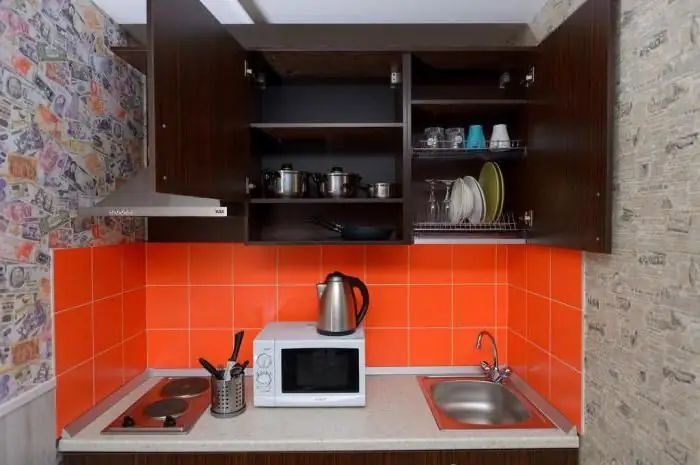- Author Harold Hamphrey [email protected].
- Public 2023-12-17 10:06.
- Last modified 2025-01-24 11:10.
M. Alekseevskaya is located on the Kaluzhsko-Rizhskaya line. The station has only one exit, and it leads to Mira Avenue and Novoalekseevskaya Street. The station has been renamed several times. Why did she change her name? What used to be where Alekseevskaya metro station is today?

Village Alekseevskoe
Like many other stations in Moscow, metro "Alekseevskaya" inherited its name from the settlement. According to historical data, in the 15th century there was a small village here, which included no more than twenty households. True, this settlement was called somewhat differently - "Olekseevskoye". He is mentioned for the first time in the spiritual letter of Vasily I.
In the documents of the 17th century, the spelling of the name of the village changed, but did not yet coincide with the modern one. Where St. m. "Alekseevskaya", once was the estate of Zakhary Kopytov, hence the name "Kopytovo Alekseevskoe identity" At the beginning of the 17th century, the village passed to Dmitry Trubetskoy, who built a stone church on its territory. Later it was renamed toAlekseevskoe.
Shcherbakovskaya Station
Construction of metro station "Alekseevskaya" began in the early fifties. The opening took place in 1954. But almost immediately the station was renamed. It was named after the then politician Shcherbakov. And four years later it was renamed again. The Mir station was present on the Moscow metro map for a very short time. M. "Prospect Mira", m. "Alekseevskaya" are located on the same branch. Both the first and the second belong to the Kaluga-Kaluga line. From "Prospect Mira" a transition to the ring branch is being carried out.
In order to avoid confusion, and also for a number of reasons, the station, which is discussed in today's article, was renamed several times in the 50-60s. But the modern name of the metro station "Alekseevskaya" was received only in the nineties. For more than thirty years it was called "Shcherbakovskaya".

Architectural features
This station, as already mentioned, has only one exit. The inclined course for escalators was built from the bottom up - a unique case in the history of the construction of the Moscow metro.
The depth of the station is 51 meters. It was built according to the project of Yu. Kolesnikova and S. Kravets. In terms of the appearance of the lobby, the Alekseevskaya metro station has much in common with such stations as Frunzenskaya, VDNKh, Rizhskaya, Prospekt Mira, and Universitet. The interior of the hall is decorated in a rather restrained style;milky tiles. The floor is paved with red and gray granite. The station is lit by chandeliers suspended from the ceiling. It is worth telling about one of the streets, which is the exit from the "Alekseevskaya" metro station.

The way to Yaroslavl
Prospect is located between the Garden Ring and Sukharevskaya Square, it is a continuation of Yeniseiskaya Street and Sretenka. In the 17th century, the road to Yaroslavl began from here. On the territory of Moscow, this route passed through Rostokino, Alekseevskoye and other villages. Approximately at this time, Meshchanskaya Sloboda arose here, after which several Moscow streets were subsequently named.
In the second half of the 19th century, the territory of the modern Mira Avenue was actively built up with mansions and tenement houses. At the end of the next century, a number of buildings appeared here, most of which, of course, have not survived to this day. In the early thirties of the last century, Mira Avenue, like many other Moscow streets, was asph alted, but not very successfully. Specialists from an American firm took part in the construction work, who, apparently, knew nothing about the severe Russian frosts.
Construction of the Avenue
The coating crumbled after two years, unable to withstand the winter cold. In 1934, the street was expanded, eliminating the tram tracks. For the same purpose, front gardens located next to residential buildings were eliminated. In 1936, a large-scale reconstruction of the avenue began. Design and construction was carried out in a short time. As a result of hastyreconstruction significantly damaged the architectural appearance of the street. Specialists, creating projects for new houses, did not take into account the style of buildings that have existed for several centuries. And soon mass housing construction began here. Already after the war, in 1949, several hundred poplars were planted along the avenue. Eight years later, the Second Rostokinsky Bridge was built.

Shopping centers near the metro station "Alekseevskaya"
There are few sights in this area. A person interested in the history of Moscow will hardly be able to find anything interesting in the immediate vicinity of this station. There are several small hotels and various shops here. Shopping malls near Alekseevskaya metro station:
- "Caliber".
- Yaroslavsky.
- Chaika Plaza.
- Peace Park.
- Antares.
Prospect Mira has many sights and interesting historical buildings. Among them are many buildings erected in the 17th century. The length of this street is almost nine kilometers. You can get to Prospekt Mira not only from Alekseevskaya station, but also from Sukharevskaya, VDNH, Rizhskaya and Prospekt Mira.






